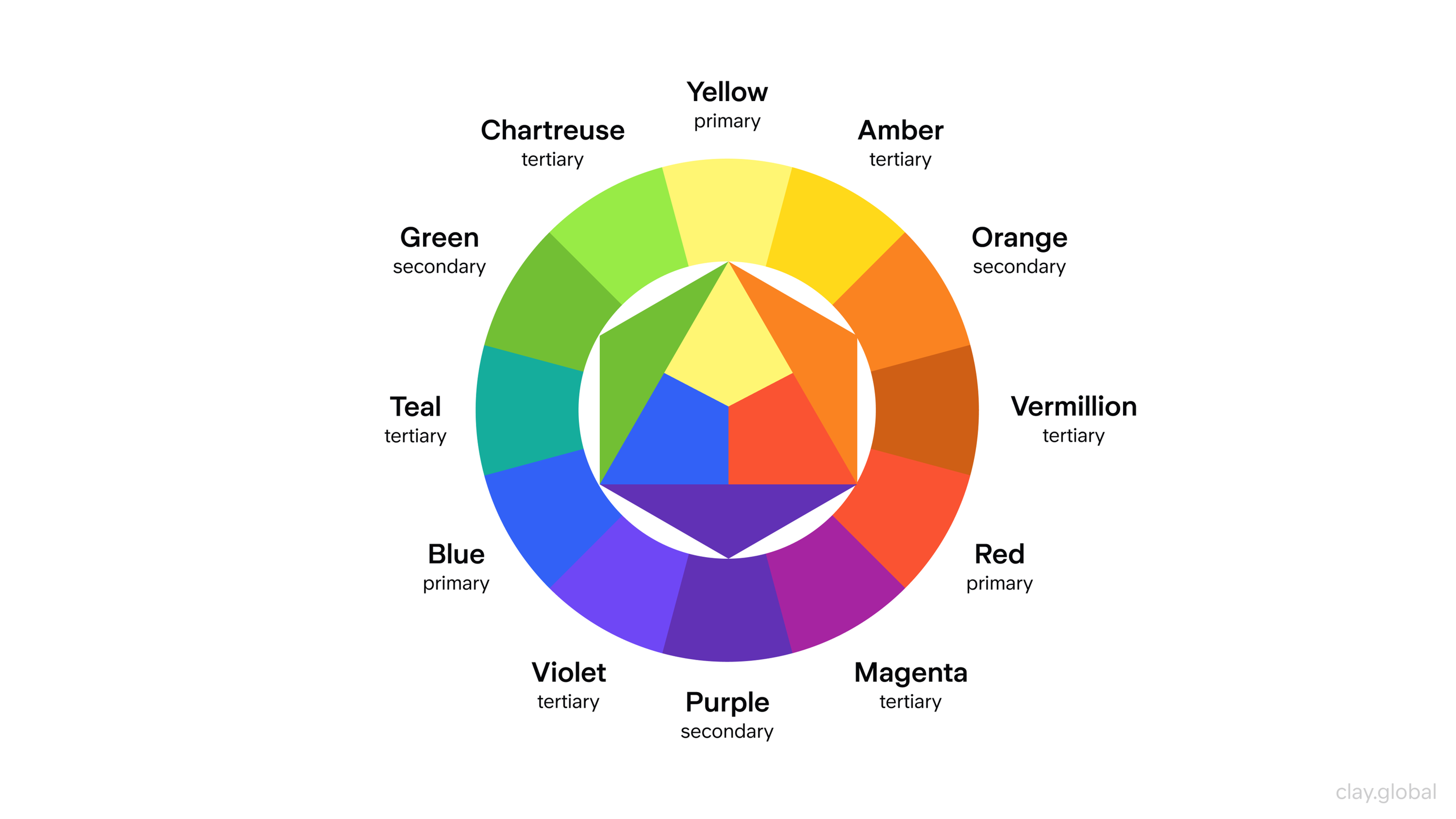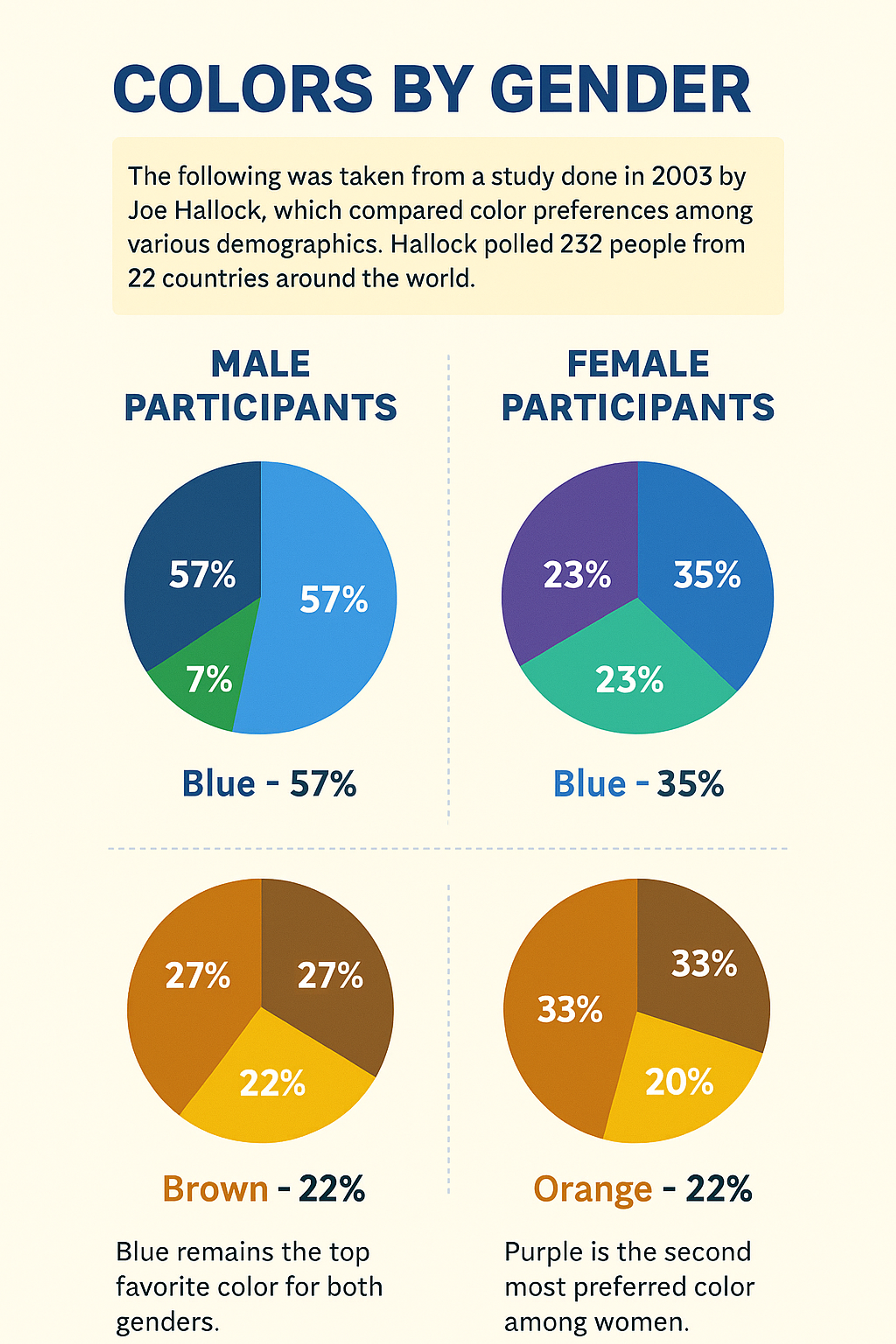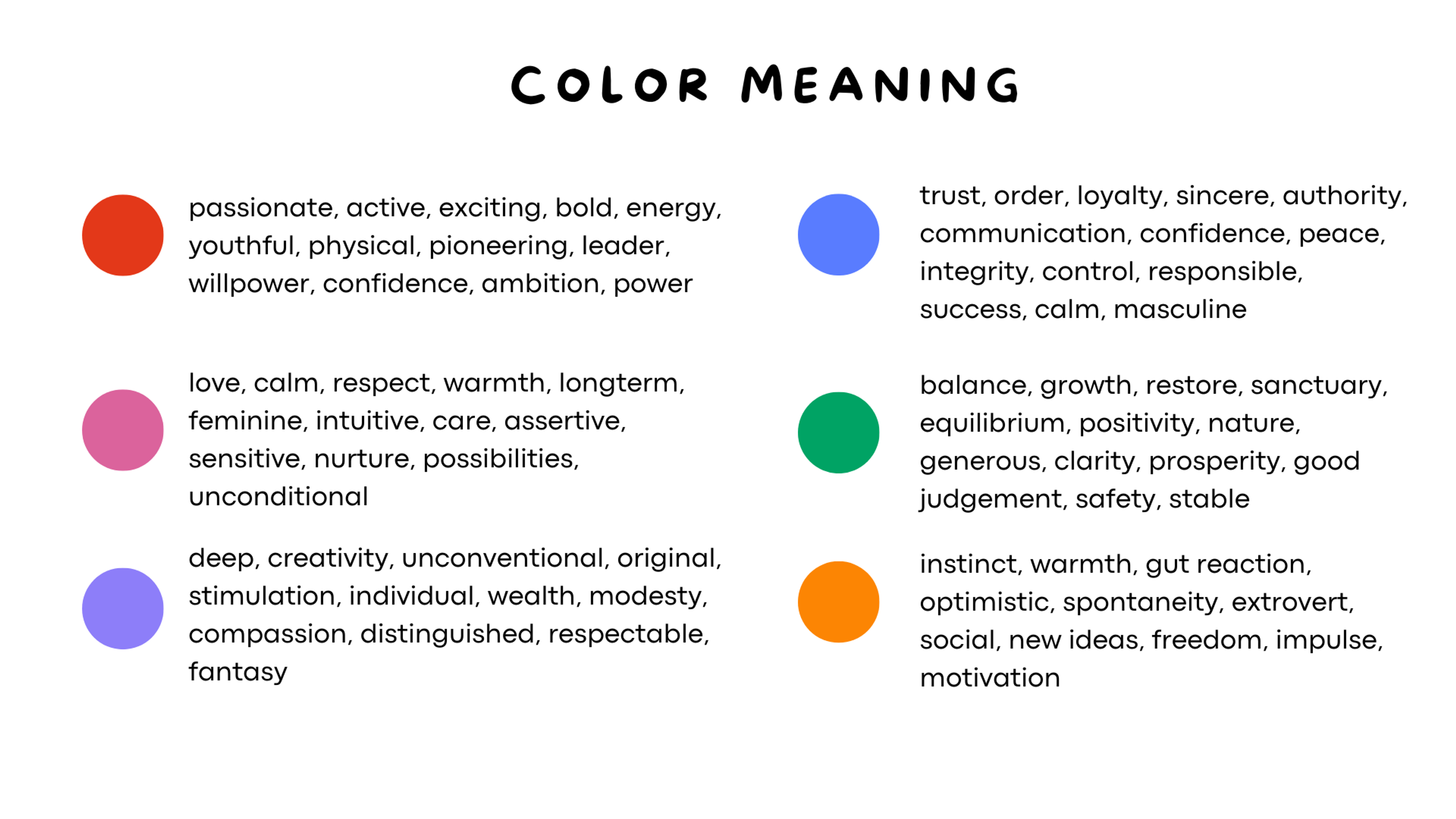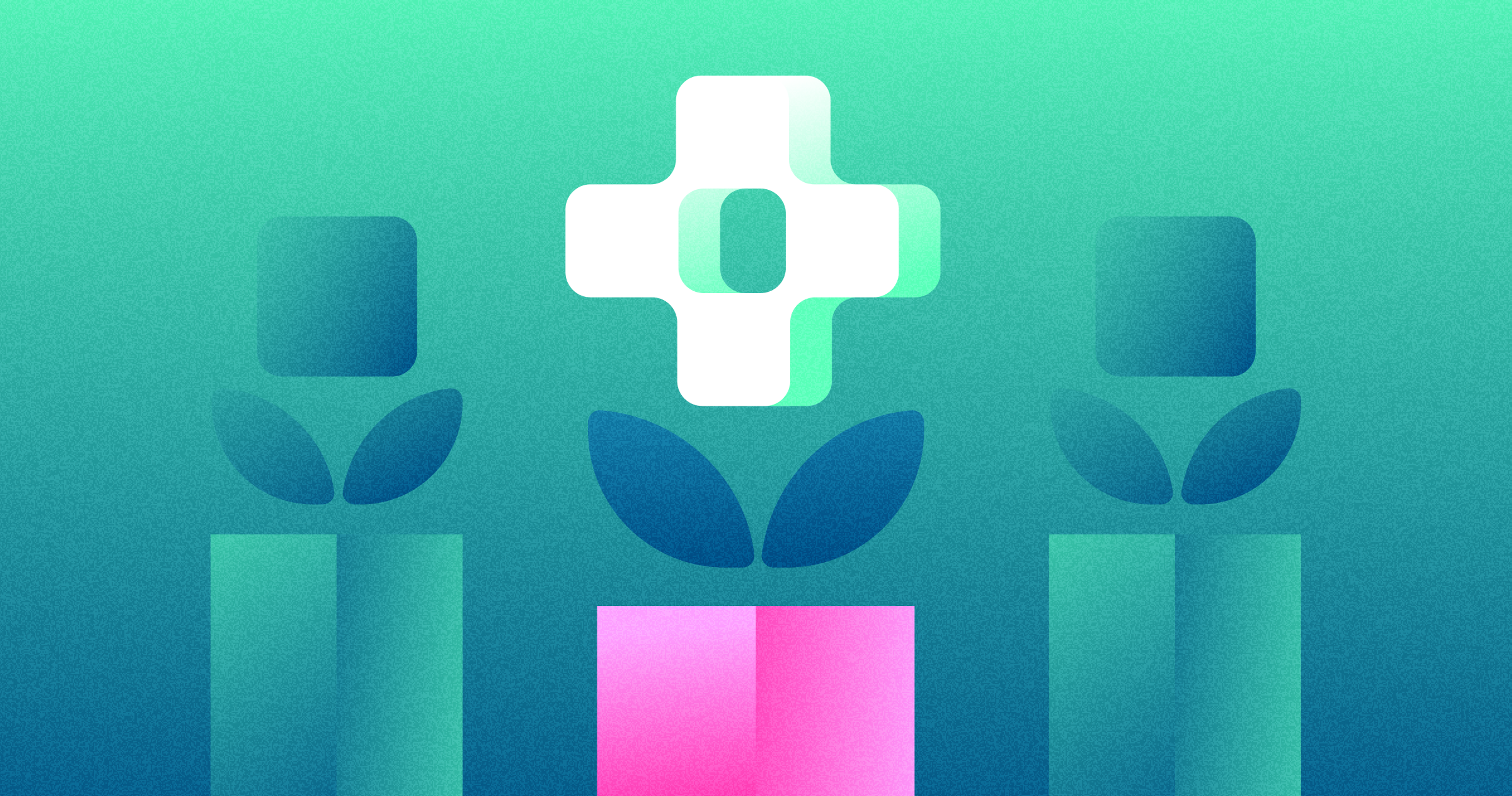In branding, color is arguably the most powerful tool for gaining attention, shaping perception, influencing emotion, and driving purchases.
Exploring color psychology means using a color with a specific intention to target particular subconscious cues and emotional responses. In a world full of visuals, your brand's colors usually serve as the first, and most lasting, impression.
Selecting brand colors is not a preference or a trend. It is a strategy. Colors communicate your brand's voice, messaging, personality, and values without uttering words. A color palette with intention reinforces brand consistency, fosters emotional bonds, and provides a competitive edge.
What Is a Color Scheme?
A color scheme refers to a specially selected combination of colors to achieve a unified brand identity. It focuses on the visual harmony of a brand's assets — a logo, a website, social media, and even physical packaging.
Usually, a brand color scheme comprises a primary color, a few secondary colors, and neutral tones. Primary and secondary combinations enhance the brand presence and visual appeal throughout various marketing materials.
A monochromatic scheme includes different values and saturations of the same color. Analogous schemes use colors from adjacent segments on the color wheel, and complementary schemes integrate colors that work oppositely to enhance each other. Each type of scheme must match the company's character and the message that is to be conveyed.
Understanding the Prime Color Chart
Before discussing the other color palettes, it is essential to investigate the brand colors, or the primary color chart. Blue, synonymous with trust and professionalism, is commonly used by finance and tech companies. Red symbolizes urgency and energy, making it ideal for brands encouraging action.
Each color and shade might inspire a different set of feelings and meanings. For instance, while a light blue might trigger feelings of peace and stillness, a darker blue might give a sense of trust and dominance.
Like many other colors, green is associated with health, wealth, and equilibrium and is thus often used by brands within the health and eco-friendly industries. Purple is associated with imagination, royalty, and wealth, black is classy and powerful, and white is clean and simplistic. As discussed further, yellow is linked with passion, positivity, and imagination.
How Many Colors Should a Brand Color Palette Have?
When crafting the brand identity of your business, one of the preliminary steps is selecting the appropriate number of colors for the company logo. However, you shouldn’t go overboard, as the most successful brands navigate between 3 to 5 colors. The main colors contribute significantly to the psychological impact of a brand's identity, creating a balanced user experience by combining different emotional effects. Here is my approach to tackling this:
- Primary Color: This is the first color the audience associates with the brand. For example, Facebook is known for its blue, while Coca-Cola is recognized for its red.
- Secondary Colors: These do not overshadow your primary color. Instead, they act as supporting shades. These colors can showcase different brand parts or be reserved for special situations.
- Neutral Colors: Black, white, and gray are usually used to help balance the palette while allowing for more freedom with text, images, and borders.
Using the same color consistently across all branding materials enhances brand awareness and identity by creating strong associations and emotional connections with consumers.
Color Wheel

Less is always more, and this notion is backed by evidence. If your brand identity uses too many colors, it is likely to get diluted, causing confusion among the audience. This makes careful selection and limited use of shades vital for better brand recognition.
Core Steps for Color Selection
Assess Values & Aesthetics of the Business: Reflect upon the organization's values, objectives, and image. Choose the colors wisely so that they represent the values accurately to ensure sincerity and consistency in the brand image toward the targeted audience.
Having explicit colour descriptors of the brand makes it easier to work with the design teams and ensures there is no misunderstanding during the selection of the brand colors. Detailed brand guidelines help protect the teams from branding decisions that go against the brand values and identity.
Know the Expectations of the Target Market: Take the time to analyze the age, culture, and values of the audience to be targeted and the colors in the branding to increase their confidence in the brand. Having these colors will definitely enhance the bond.
Analyze the Color Palette of the Rivals: Identify the colors that stand out in the focus area to find trends and avoid monotony. This will ensure their brand is relevant, different, memorable, and not overshadowed by the competition.
Experiment with Combining Colors: Blend colors while considering the accessibility options for people with poor eyesight and color blindness. A blend that maximizes the interface's usability while ensuring it is user-friendly for all should be the target.
Technical Considerations
When working on a color strategy, there are key considerations to keep in mind for your branding to remain robust and continuous across all platforms and mediums:
- Adapting Your Palette: Your palette must be adaptable to work for a website, social media, packaging, and print. A flexible sound palette allows the brand to have a strong visual identity. Think about adding different shades and tones for other brand applications.
- Branding Color Levels: If branding comes to mind, primary and secondary levels must be clear. Primary colors should be the core elements of your brand, used heavily, and second colors should act as accents to enhance the design and ensure visual interest. Maintaining this structure provides a balanced and consistent visual identity.
Documenting color codes in brand guidelines is crucial to ensure that all team members can effectively implement the designated colors and maintain a coherent brand identity. Additionally, adhering to the Pantone Matching System is essential for accurate color representation in branding and marketing materials.
A Chart Comparing Color Preferences by Gender

- Color Adaptation for Screens and Color Print: Colors are omnipresent but can look different, so knowing the difference between what looks good on digital and printed material is key. For digital use, ensure the colors are optimized for RGB, which is for screens, and CMYK, which is for printed pieces, to elevate the accuracy of the piece.
- Code of the Colors and Their Use All Over: It is essential to establish these codes, whether Hex, RGB, or CMYK, for brand integrity in all marketing mediums. These codes ensure accurate color matching of your brands everywhere, from digital platforms to printed forms, building confidence among your audience. This associative thinking makes it easy for the audience to relate these colors with the right brands.
Responsive systems are easier to assemble and maintain, such as brand campaigns or other activities a company might need to do or make in the future. It is one thing for colors to look good and one thing to adapt to a fully functional system. A powerful color strategy sets the stage for your brand’s visual image and communication.
Psychology of Color in Business
Knowing the psychology of color is important because it helps with user behavior and brand image, and is an essential part of the color business. Purchases and customer decision-making are influenced by how they perceive a brand, its image, and the interactions they have with it.
When developing a brand, setting aside one's feelings and biases regarding colors is equally important. Evaluation must be done on how colors will be perceived in accordance with the brand objective and the audience.
The color blue symbolizes trust and professionalism, which is why banks use it. Red, another illustration, is used in sales and marketing because it energizes people and creates a sense of urgency.
Color Meaning

Also, color can have varying meanings from culture to culture; a hue may indicate prosperity in one society, but in another, its meaning could be entirely different. This is incredibly important for companies planning to have global outreach.
The industry's trends also affect color choice. For instance, technology companies prefer soft colors like blue and grey. Green and other earthy tones are popular in health and wellness brands because they represent vibrancy and balance.
With color intelligence, a business can examine the meanings of colors to create sustainable, lasting impressions by evoking emotions and satisfying cultural and industry needs.
Colors And Their Qualities
How people perceive different colors can be subjective and can be impacted by culture and other factors. That is why you need to understand who your customers are, where they are from, etc.
Understanding the color spectrum is vital for selecting colors that resonate with your brand’s identity, appeal to your target audience, and enhance brand recognition. A bright color palette can evoke feelings of vitality, creativity, and youthfulness, making it an excellent choice for brands targeting a younger audience.
Before choosing the colors you want to use for your branding, you should test them to ensure they are the best choice for your brand identity traits target audience.
- Blue – honesty, competence, trustworthiness, and reliability.
- Red – Attractive, exciting, angry, and loving.
- Green – Money, health, balance, and knowledge.
- Purple – Royalty, respect, creativity, and mystery.
- White – Purity, space, neutrality, and innocence.
- Black – seriousness, sophistication, and intelligence.
- Yellow – Happiness, youth, and adventure.
You need to research and choose your brand and target customers to ensure you make a good decision when choosing the branding colors. You can hire a branding design firm to help you make the correct choices if you need to know which ones to make.
Photo by Mika Baumeister on Unsplash

How to Choose Brand Colors
Choosing the correct branding color is going to take a lot of work. Before doing this, you must know what brand message you want to communicate to your customers.
Understanding your brand identity and brand personality traits is crucial before choosing the brand’s primary color and brand color. Once you know this, you can choose the primary brand color that helps provoke customers’ emotions. Understanding color terminology can significantly improve the efficiency and accuracy of the brand color selection process, enabling clearer communication with design teams.
You need to understand your business stand, brand identity and how you want people to perceive your business. If you have yet to learn this, figure it out before proceeding.
Color combinations and complementary colors you choose matter as well. One color may provoke a specific customer emotion, but combining two colors could change that. The more additional colors that are added, the more complexity will increase.
You must have a strong understanding of color psychology to make the correct decision. That’s why many businesses hire a branding and design agency to help them do all of this.
Photo by Chris Barbalis on Unsplash

When selecting the appropriate colors for your brand, there are several factors to consider:
- Target audience: Before choosing specific hues, consider who you’re trying to reach with your branding efforts. Different demographics respond differently to various shades, and understanding their preferences can help you select a palette that resonates with them emotionally.
- Budget: Colors can be expensive depending on the medium used; if you’re printing materials or creating web designs on a tight budget, you may need to dial back the number of hues included in your branding scheme to stay within budget constraints.
- Brand consistency: Keeping all marketing materials consistent is essential when creating an effective brand identity. By keeping new hues added complementary or slightly contrasting, ensure they do not detract from or confuse existing primary colors.
Ultimately, the number of primary and secondary colors used in a brand’s visual identity depends on the company’s goals and target audience. Some businesses may opt for just one or two primary colors across all marketing materials.
Others may incorporate multiple hues analogous color scheme to differentiate between products or services within the same organization. Regardless of the approach, it’s essential to consider how different shades can influence consumer perception and behavior when selecting appropriate brand colors.
Picking The Colors For Your Brand Identity
There are many ways to pick brand colors. There are different ways to choose the most color meanings the right colors; they are all excellent methods. This is because colors and the emotions they make people feel can be subjective.
Using a color palette generator can assist in creating cohesive color schemes essential for effective branding. It helps define brand identity, ensures consistency across various mediums, and streamlines the color selection process to enhance overall visual impact.
Usually, a brand will have up to four primary and secondary colors in its branding. If you choose more, the design can look messy. This will give a wrong first impression to everyone who sees it. If you are having difficulty deciding, remember to keep the design simple.
The base color you choose needs to reflect the essential characteristics of your brand’s identity. What do you want people to think about your brand?
Answer this question first, selecting a color that matches your answer. This is the most critical color and will be present in all parts of your branding. You must ensure it looks good and your target customers like it.
The accent color you choose needs to match the base color. These brand colors should complement each other. They will be used together in your branding. Accent colors need to reflect a characteristic of your overall brand identity too, so don’t choose any color that looks good. There should be a reason behind all of your choices.
The neutral color will be the primary one used for the background of your branding and designs, as well as your website. It is usually white or gray. If you choose a dark blue or black, you must ensure it doesn’t affect the other colors when they are used together.
Before deciding on your own brand palette and colors, you need to test them. Get feedback from your target customers and change the brand color palette if necessary. The various color schemes and combinations you choose need to be liked by your customers. Experimenting with different color combinations can help you achieve the desired brand identity and ensure your choices resonate with your audience.
An illustrative example of thoughtful color palette integration is our work on Meta’s Terragraph project. We ensured visual consistency across all platforms by developing a custom color palette harmonizing with Meta’s branding, reinforcing brand recognition and trust.
Meta Terragraph Design by Clay
Real-World Brand Examples: Thoughtful Color in Action
Haus
Haus, a modern aperitif brand, combines warm amber hues with sage green and beige packaging. This palette reflects its all-natural ingredients and artisanal approach while appealing to a design-conscious, health-aware audience.
The colors are subtle yet evocative, setting Haus apart from the traditional deep reds and blacks of the liquor industry. These color choices also reflect Haus's brand's personality traits, emphasizing its commitment to natural, high-quality ingredients and a sophisticated, modern lifestyle.
Color takeaway: Color combinations rooted in nature help communicate craftsmanship and health-consciousness.
Source: drink.haus

Monzo
Monzo, a UK-based digital bank, uses a vivid coral pink for its debit card — a striking and unconventional choice in the traditionally conservative finance space.
While its core digital palette includes blues and dark greys for trust and professionalism, the coral card becomes a powerful visual signature, signaling innovation and youthfulness.
This choice has notably helped increase brand recognition, making Monzo stand out in a competitive market by creating more memorable experiences for consumers.
This choice is a result of strategic brand marketing, where the brand marketing team leverages data and insights to create a color palette that aligns with Monzo’s core values and goals, ensuring the colors resonate with the target audience’s perceptions and emotions.
Color takeaway: A bold accent color can break industry norms and make a lasting impression.
Source: Monzo

FAQ
Which Color Is Best For Branding?
The best branding color depends on your message: blue signals trust, red creates energy, green conveys growth, and black shows luxury.
How To Pick Colors For Branding?
Choose colors that match your brand’s personality, test them for readability, and apply consistent rules across all platforms.
What Is The 60 30 10 Rule With 4 Colors?
It’s a design balance rule: 60% dominant color, 30% secondary, 10% accent, with a fourth used only as a subtle highlight.
What Is The Brand Color Rule?
Limit your palette to 3–5 core colors, define exact codes (HEX, RGB, CMYK), and keep them consistent in all design assets.
How Many Colors Are Too Many For A Brand?
Using more than 5 colors often weakens recognition. Fewer colors keep your brand simple, strong, and memorable.
Read More:
Conclusion
Make sure to use the right colors because they define how good the user experience will be and how strong the brand's image will be. Ensure your brand image is enhanced by blending with your strengths around colors.
Consistency is the trick, as are regular checks for changes in business direction, user negative comments, and industry-first-aided design trends. Under the right conditions, color can positively impact people and their environments, making everything seem better.


About Clay
Clay is a UI/UX design & branding agency in San Francisco. We team up with startups and leading brands to create transformative digital experience. Clients: Facebook, Slack, Google, Amazon, Credit Karma, Zenefits, etc.
Learn more

About Clay
Clay is a UI/UX design & branding agency in San Francisco. We team up with startups and leading brands to create transformative digital experience. Clients: Facebook, Slack, Google, Amazon, Credit Karma, Zenefits, etc.
Learn more



